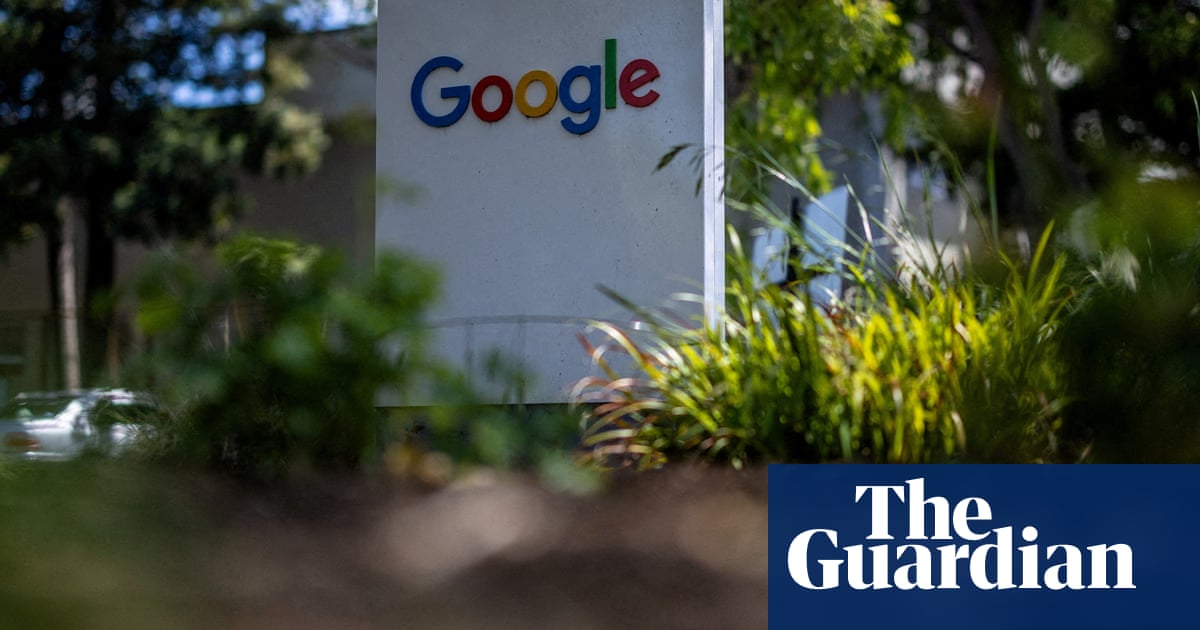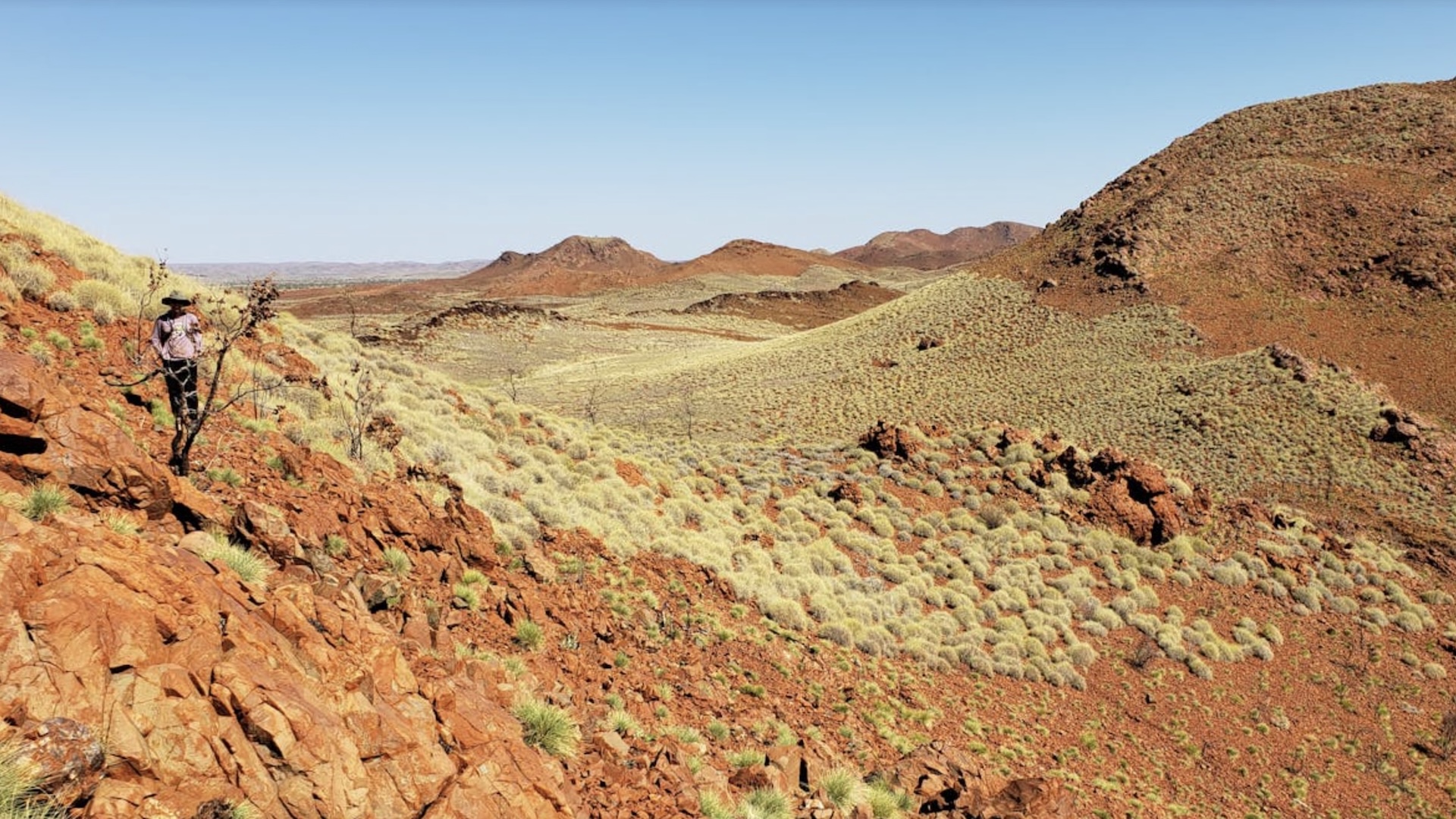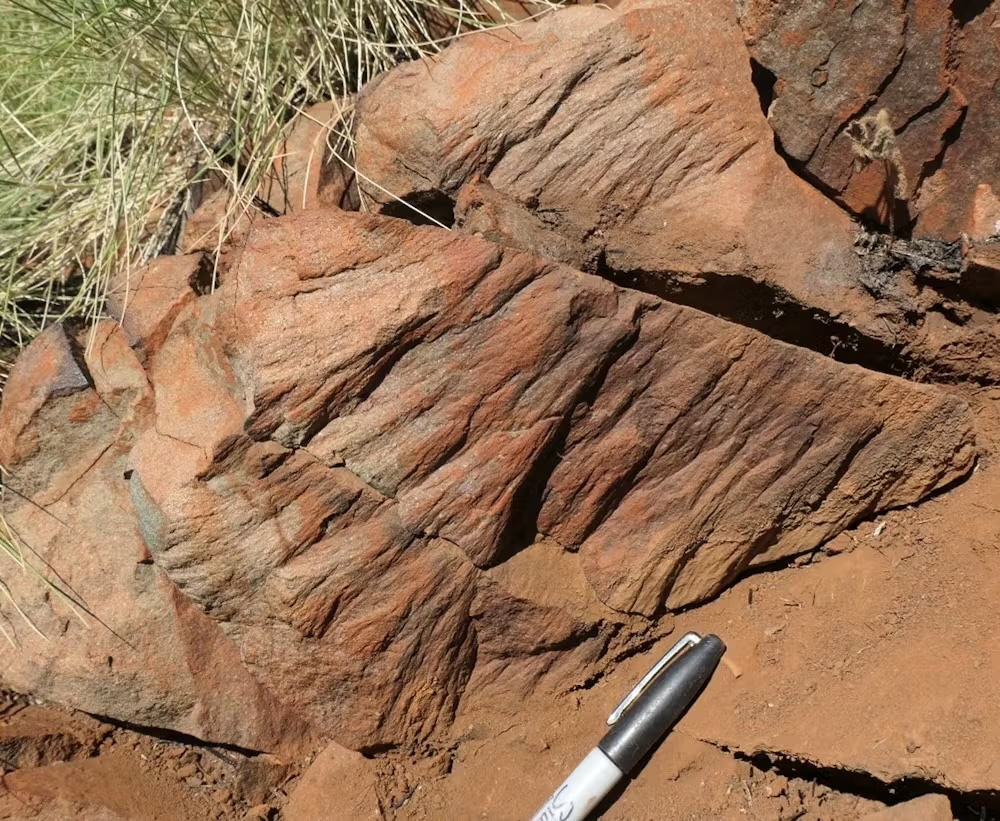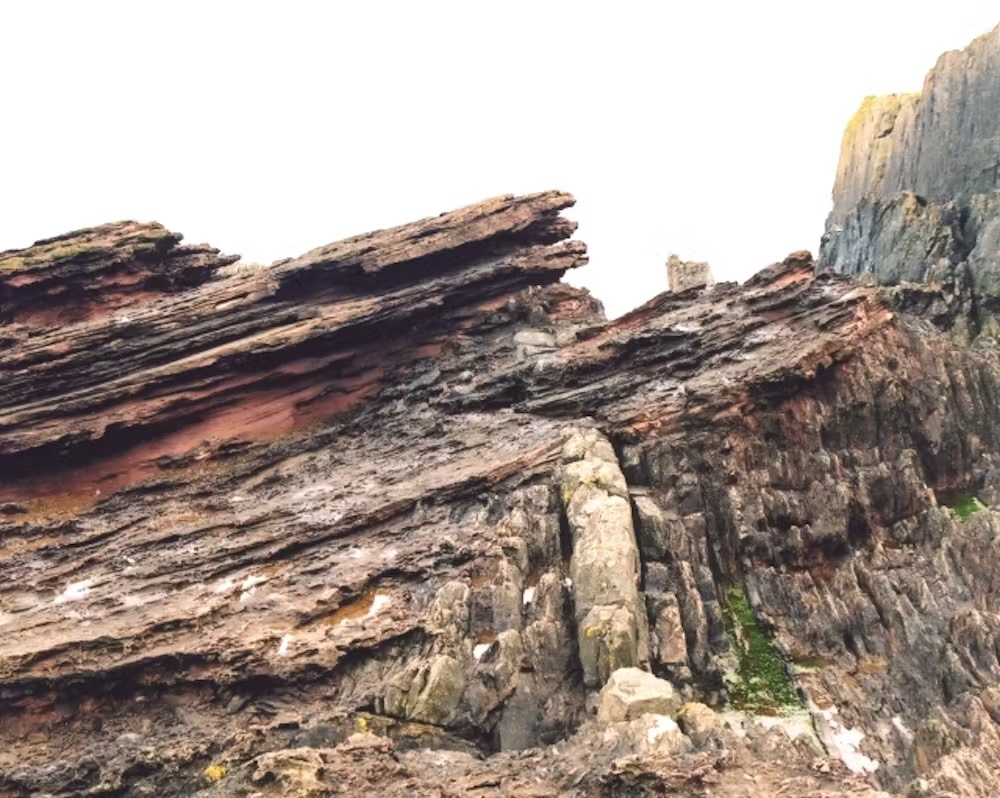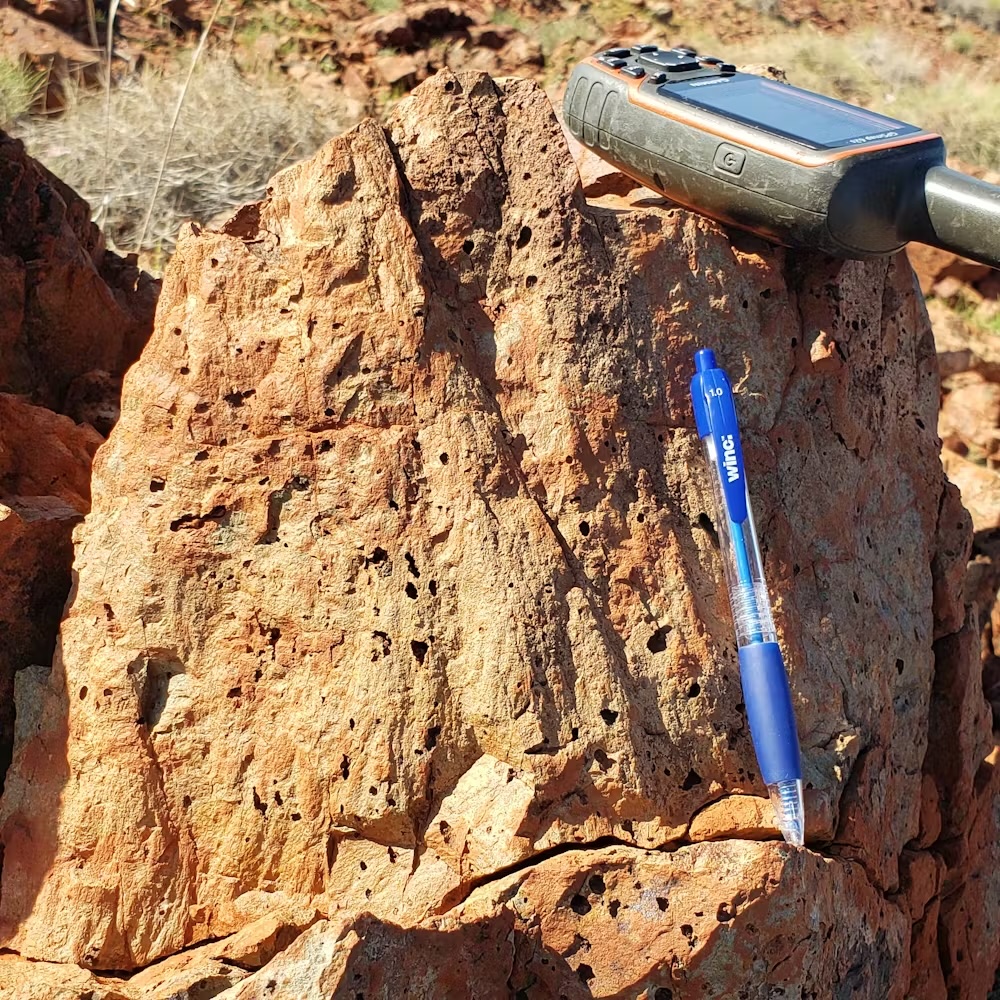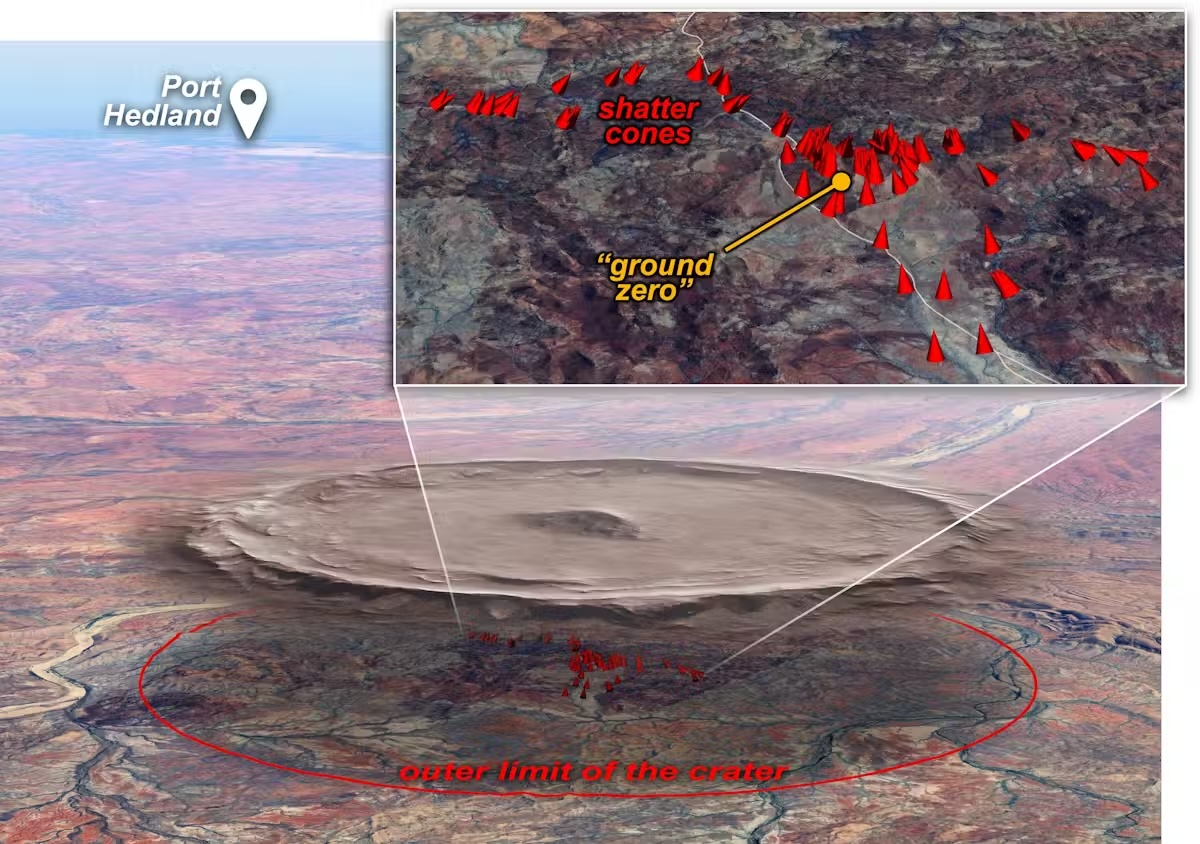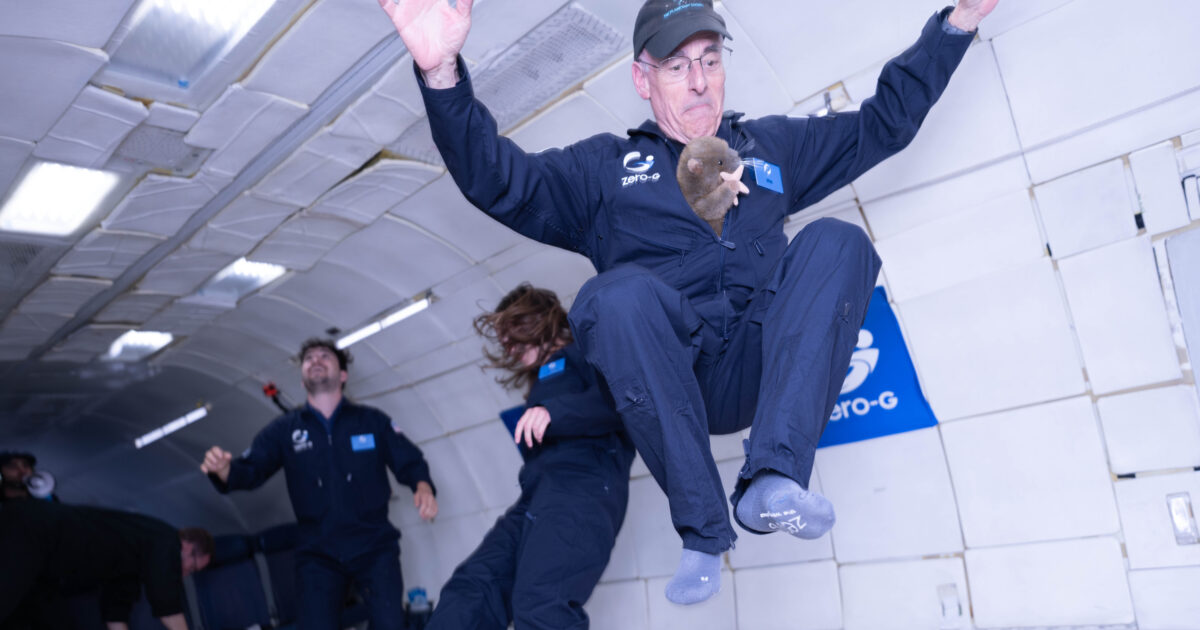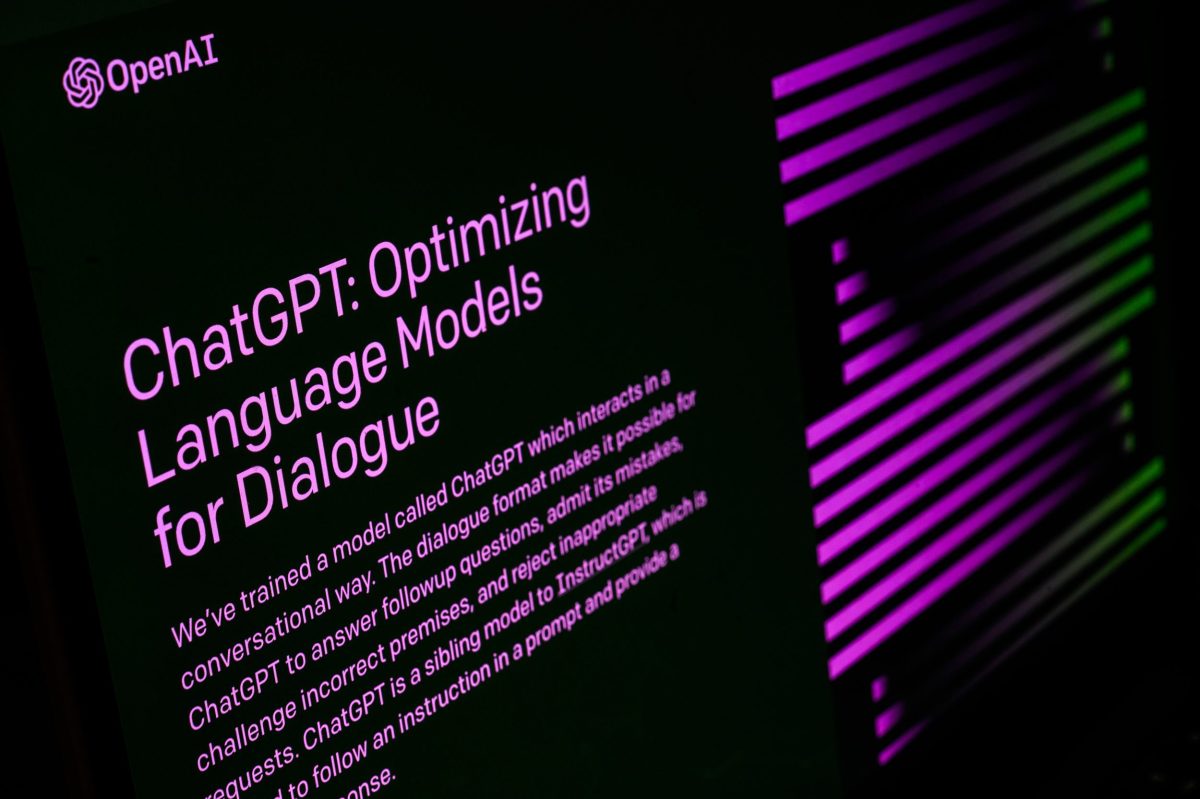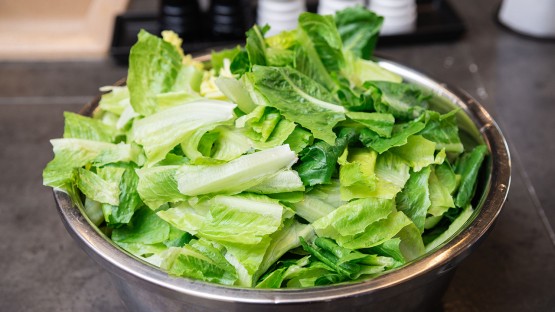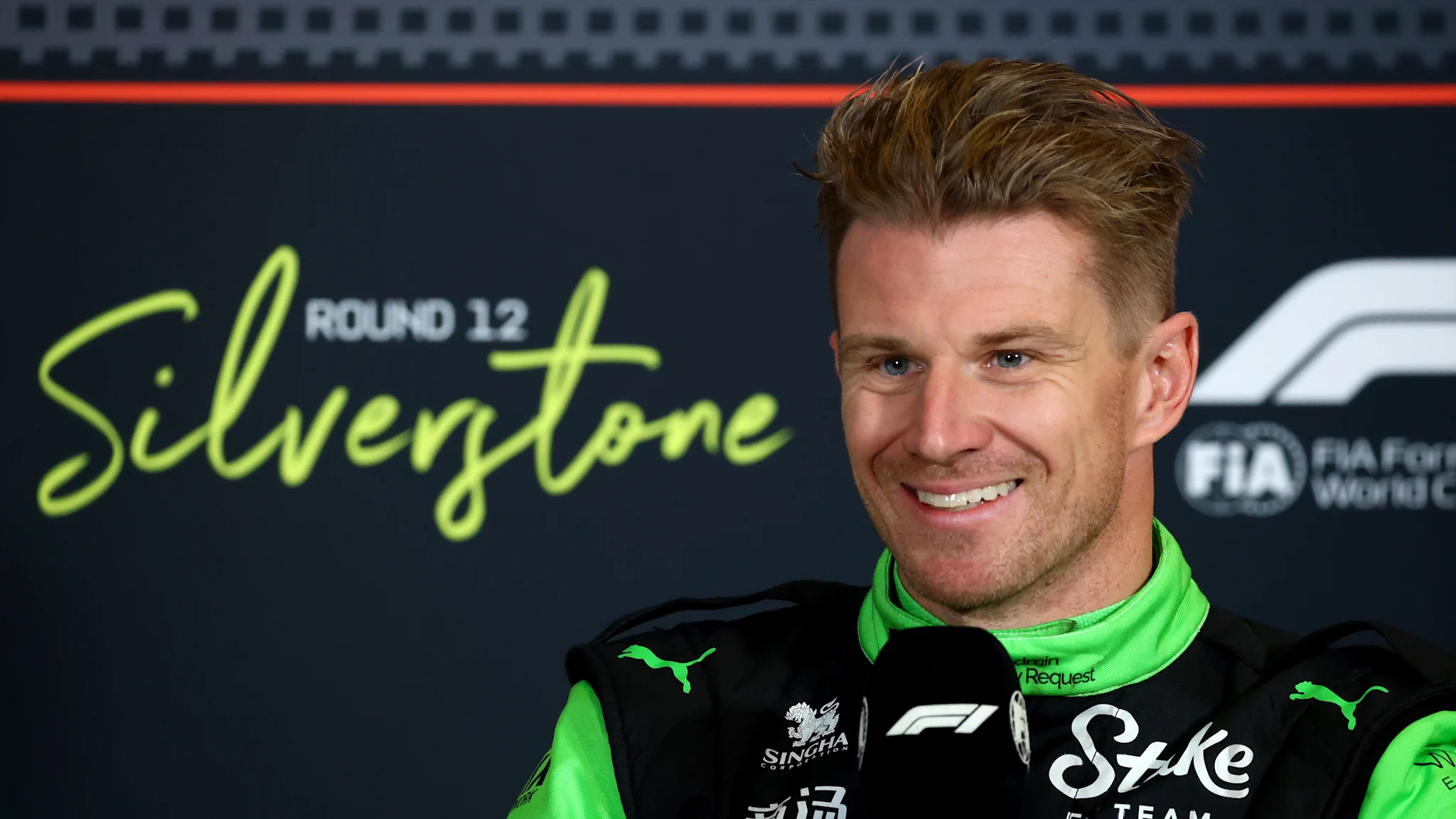Sarah Al-Ahmed: Mat Kaplan goes on a Zero-G adventure. This week on Planetary Radio. I’m Sarah Al-Ahmed of The Planetary Society with more of the human adventure across our solar system and beyond. What happens when explorers from around the world come together to experience weightlessness for the first time? We take you aboard a special Zero-G flight organized by Space for Humanity, an experience designed to make the wonder of weightlessness accessible to more people. Former Planetary Radio host, Mat Kaplan joins a crew of students, scientists and space dreamers for a once-in-a-lifetime journey.
You’ll hear my conversation with Mat about what it was like to finally float in microgravity after decades of interviewing astronauts and what it meant to share that moment with refugees, rocket builders and people who never imagined they’d get that close to space.
You’ll hear reflections from Space for Humanity, executive director, Antonio Peronace, Zero-G CEO, Kevin Sproge and space mentors like Emily Calandrelli and Sian Proctor. We’ll also meet inspiring participants like Roxy Williams, a Nicaraguan refugee and software engineer, and Maddie Bardy, the CEO of the UC Berkeley rocketry team. And of course we end the show with Bruce Betts, our chief scientist, and another round of What’s Up.
If you love Planetary Radio and want to stay informed about the latest space discoveries, make sure you hit that subscribe button on your favorite podcasting platform. By subscribing you’ll never miss an episode filled with new and awe-inspiring ways to know the cosmos and our place within it. This flight, which was in partnership with Zero-G, brought together a diverse group of participants selected by space for Humanity to experience weightlessness, not just as tourists but as future changemakers here on Earth.
Space for Humanity is a nonprofit organization on a mission to expand access to space by giving purpose-driven leaders the chance to experience the overview effect. That’s the shift in perspective that was first described by author, Frank White. It’s what many astronauts report feeling when they see Earth from space, A profound sense of awe, interconnectedness, and a responsibility to our shared planet. Space for Humanity has sponsored travelers on spaceflights before. But for this adventure they partnered with Zero-G, the only FAA-certified provider of commercial weightless flights in the United States.
Using a specially-modified Boeing 727, Zero-G simulates microgravity through a series of parabolic flight maneuvers. Together they launched the Fly with Me and Zero-G campaign where everyday people from around the world could submit videos and essays explaining how they would use this experience to benefit Earth. Dozens of winners were paired with space mentors, including astronauts, educators, and science communicators. Among them was someone very familiar to longtime Planetary Radio listeners, our former host, Mat Kaplan. A surprise cancellation gave him a last-minute ticket to fly. I sat down with Mat to hear what it was like to finally live the dream he’d carried for decades. Hey, Mat. Welcome back down to Earth.
Mat Kaplan: Hi, Sarah. It’s a good planet. I’m happy to be on terra firma again.
Sarah Al-Ahmed: But really though this was so well-deserved. I know this is a dream that you’ve had for ages. And after speaking with so many people that have had this experience, I bet that really impacted your desire to try to experience it yourself.
Mat Kaplan: No question about it. I have dreamt, I mean, my gosh, long before I started doing Planetary Radio or even join the society, I was thinking how cool it would be to be up there in zero-G. and that’s one of my favorite things when I… the few times that I’ve snorkeled or scuba dived or just floating in a pool, trying to find neutral buoyancy and pretending that I’m in free fall.
Sarah Al-Ahmed: So how did you end up on this flight with Space for Humanity?
Mat Kaplan: Oh, man. Talk about right place, right time. We had just finished the Humans to the Moon and Mars Summit that you featured. Thank you. So recently. I was standing around and there was Antonio, Antonio Peronace who is of course the CEO of Space for Humanity. We were all talking about where we were going next and he said, “I’m headed to Long Beach, California because we’ve got our first collaborative flight with Zero-G.” And I said, “Oh man, Antonio, someday I’m going to have to pay for it. And I don’t think that Society is going to pay for it, so I’m going to have to come up with the money to make that flight.” He said, “You’re kidding.” He said, “Are you available in two days because we’ve had a cancellation?” And my head exploded. I told myself, “Do not count on this.” By that evening when I saw him again because we were going to dinner, he said, “You’re in. Be there at 6:45 in the morning.” That’s how this happened. It was just he had an open seat.
Sarah Al-Ahmed: Seriously, what a lucky coincidence and beautiful of them to let you have this experience after so many years of dreaming about it. But everybody else had to apply to be on this flight, right? What was the process for other people to become a part of this?
Mat Kaplan: I mostly know about the people who were sponsored by Space for Humanity, who were the winners, if I can put it that way, of their international competition to submit essays about their passion, beauty and joy of space exploration and why they wanted to travel in space. And it’s an amazing group. They are truly international. Each of them was paired with a mentor, people like Dr. Sian Proctor who we’ll hear from and why this one woman, Roxy from Nicaragua though she lives in Costa Rica now, you’ll hear her describe this, I think, is basically a refugee. And she waited till the last minute because she thought this refugee woman from Nicaragua had no chance. And someone said, “No, no, no, you must apply.” And she got it in on the day that it was due her essay, and sure enough, she was there on the flight with us.” I’m sure you will agree when you hear it, a very touching, very affecting conversation I had with her.
Sarah Al-Ahmed: I loved hearing her story and I’m so happy that she got to have this experience and that she’s going to get to share it with other people. All of these people came from different walks of life and I love that that’s kind of what this entire journey was about, was sharing space with people that might not get the opportunity to do it otherwise.
Mat Kaplan: This is the dream of Space for Humanity, the organization that Antonio heads. Their mission is we send purpose-driven leaders to space. And I think everybody there had a mission. Everybody there felt the wonder and the awe or as the boss says, PB&J, the passion, beauty and joy of all of this. And was ready to have fun because that was definitely something that they told us, “Have a great time doing this. It’s an adventure.”
Sarah Al-Ahmed: Actually, seeing the video of this thing was really enjoyable for me because when I imagine people going on these zero-G flights, it’s usually like a few people in the cabin, but this place was just bouncing off the walls with people that were having-
Mat Kaplan: Literally.
Sarah Al-Ahmed: … the best time ever. Literally. How many people were on this flight?
Mat Kaplan: Oh, gosh. I’m not exactly sure, but I think because it was the Space for Humanity crowd, the mentors and mentees, but there were quite a few other people. And I’m going to bet that there were about 50 of us and we were broken up into two groups and that’s in addition to the fantastic crew from Zero-G, from the captain of the plane who I think we may hear from to the people like our coach for our group and the media people. And they really just were so good at what they do and we’re very sure-footed thank goodness because the rest of us weren’t except for those like Sian Proctor who had spent a few days in zero-G in free-fall.
Sarah Al-Ahmed: One of my favorite moments in the video was two people there were holding hands and one of them just starts kicking, trying to correct their body position. And luckily there were people on board who could remind everyone, “Please don’t kick because getting kicked in the face and zero-G would be such an experience.”
Mat Kaplan: Oh, there were arms and legs and hands and feet everywhere. And you had to struggle because when they gave you the word that you were coming out of the parabola, you had to get down on the ground and hope nobody was on top of you, or on the deck I should say. And that happened to me a couple of times where it was a close thing. It would’ve been interesting at 1.8Gs which is where we bottomed out. But it was just so joyful. It was so joyful to be part of this.
Sarah Al-Ahmed: What did it actually feel like?
Mat Kaplan: You get a taste of it when you’re at neutral buoyancy in the ocean or a pool or whatever, but keep in mind that you still have gravity pulling down on your insides, your guts. You’re still feeling one G and you simply don’t feel that. I mean, the first two parabolas were at lunar gravity, 1/6 G and I thought, “Okay, that’s no big deal. I’ve seen the astronauts do it. You just shuffle.” You are bouncing off the ceiling even on those. And then the other 11 parabolas to follow at full free fall, zero-G. It’s amazing because I’ve spent so much time in the water, even though they had warned us and I knew it rationally, I was still trying to swim and there’s nothing as dense as water to push against.
Fortunately as you said, there are people to help and there are straps everywhere and everything is padded, so you’re in pretty good shape. But you do get the hang of it after doing it a couple of times. They had us do the Superman fly and then doing where you push off from one side of the plane and you crawl around the top of the fuselage and come back to where you started so that you’ve done a complete 360. And then finally, toward the end when the coach lets loose a bunch of water and you have nice globs of water just like you see astronauts playing with on the ISS. I was so proud because I grabbed one in my mouth on my first try and I thought, “Okay, that’s it. I’m ready for the ISS.”
Sarah Al-Ahmed: Were there any things that you wish you could have done in zero-G while you were up there that you didn’t get a chance to try?
Mat Kaplan: The only thing that I would like to try that I didn’t get to try is to be up there for a lot longer because we were getting tops a little more than 30 seconds at a time. I think of the chance to do this on a suborbital flight for three, four minutes or oh my God, to do it in low Earth orbit and do it for days or weeks or months, I just think it would be heavenly. I mean, when I was a little kid, I had dreams of flying all the time. And now that dream has been realized for that short time.
Sarah Al-Ahmed: Well, you’ve interviewed astronauts and space travelers for so many years, but this was your first taste of experiencing what they got to experience up there. Do you feel like that has recontextualized any of the conversations you’ve had with people in the past?
Mat Kaplan: As a matter of fact, I do. Yeah, to a degree. I talked with Frank White about this in the conversation I had with him just as we speak last night for the book club because we were considering his book, the fourth edition of the Overview Effect. And we talked about what is there about the Overview Effect that can be experienced by those of us who don’t make it up into space? Can you have a little bit of that and become what he calls a terranaut? And he said, “Well, he first started to have a sense of it flying cross-country at 35,000 feet, a piece of it.” He said, “To get the full effect, you probably have to be at least in low Earth orbit.” And so much better to be out there like an Apollo astronaut looking back at the Earth rising over the moon. But we talked about the zero G experience and how even without windows in the airplane because there were no windows, and by the way no bathroom. You still have that sense of something other worldly, which I do think enhanced my sense of how… first of all, how special it is to go into space, but also how special it is to have this planet that we evolve to do so well on at one G.
I will only attempt to quote Frank and it’s best if people actually hear him say it, but because he’s asked all the time, “How do I experience the overview effect? I’m not going to go to space.” He said, “Understand that we live on Spaceship Earth.” And he fully credits… and is a big fan of Buckminster Fuller who created that term that we are all interrelated, that our actions affect not just other people, they affect the planet and in a sense they affect the universe.
And in fact, I brought up with Frank during my conversation with him that wonderful quote from Carl Sagan, that we are a way for the universe to know itself. We only need to realize that we have that status and that’s available to everyone perhaps with a bit more difficulty than if you were looking down at the Earth going by under you circling it every 90 minutes. But still something we can have a piece of.
Sarah Al-Ahmed: Well, I’m going to link that conversation you had with Frank White on this episode page. And it’s part of the book club that we do every single month. You’re the host of. Last week, I did let some of our listeners know just very briefly that we’re going to be starting to do a monthly new edition of Planetary Radio that covers your book club. Do you want to talk a little bit about that and what you’re so excited to share?
Mat Kaplan: Well, first of all, I’m extremely grateful because to move these conversations, some of them anyway into the podcast feed for Planetary Radio is just huge. And there have been so many wonderful conversations. I really look forward to sharing these monthly with this new audience and what a great way for us to start with the very first one we did, Andy Weir.
Sarah Al-Ahmed: I loved Project Hail Mary so much. I can’t wait for people to see that movie and to hear your interview with him. Just absolutely wonderful. And of course it’s not the first time you’ve spoken to him. You’ve spoken to him before on Planetary Radio, but oh my gosh, you’ve had so many wonderful adventures through your time on the show and at The Planetary Society. And I’m so grateful that now I get to help carry on that legacy that you’ve built. And I’m hoping too that after this time that you’ve had on the zero-G flight that perhaps you get to be a mentor to the next group that gets to go up.
Mat Kaplan: Oh, wouldn’t that be swell? Oh man, I’d be first in line if Antonio has said, “Hey, you want to help us out with this next one?” It would absolutely be delightful. And Sarah, you’ve heard me say it before, you are carrying on this tradition of Planetary Radio so well and with such flying colors. I hope you also get your opportunity. You have a much better shot at getting up there higher than that zero-G, 727 one. And I know that you’ll appreciate that experience at least as much as I did or any of us do when we get up there and have a taste of the overview effect.
Sarah Al-Ahmed: I’ve been dreaming about that one since I was a kid, but back then we didn’t have opportunities like commercial space flights and things like that. It’s just really interesting being in a time where space is becoming more and more accessible every day. I hope you get that experience as well. And oh my gosh, I would love to do that so much.
Mat Kaplan: Let’s go together.
Sarah Al-Ahmed: Let’s go. Planetary Radio live from outer space.
Mat Kaplan: I’m ready. Let’s go tomorrow.
Sarah Al-Ahmed: Let’s do it. Well, thanks for sharing this experience that you got to have with everyone, Mat, and I’m so looking forward to hearing more about your adventures and sharing your book club in the future.
Mat Kaplan: Thank you very much, Sarah, and keep up the great work. Dare I say it, ad astra.
Sarah Al-Ahmed: Thanks, Mat. You can hear more from Mat every month in our new Planetary Radio Book Club Edition, which I’ll host on the third Friday of each month. Now, let’s go back to the beginning of the day where Mat met up with Antonio Peronace, the executive director of Space for Humanity. This was just before takeoff.
Mat Kaplan: If I wake up from this dream, I’m going to be really pissed.
Antonio Peronace: But, Mat, it’s not a dream. In just a matter of a couple hours, you are going to do what so few have been able to do, which is escape the pull of gravity a force that’s almost all the time. You are going to float weightless in zero gravity.
Sarah Al-Ahmed: Antonio helped set the tone for the day, but it was Zero-G CEO, Kevin Sproge who officially welcomed the passengers and introduced their pilot.
Kevin Sproge: Alrighty, so you’re all checked in. This is going to be your boarding pass. Please keep this on you at all times with your name tag. We actually wear it upside down and then once we land today, we flip it right side up. It’s an old NASA tradition. The ladies inside, Kaz and Shay will get you set up with a flight suit. There’s some breakfast in there as well and then we’ll get started around 8:10.
Maddie Bardy: Okay, thank you.
Roxy Williams: Thanks so much.
Kevin Sproge: You’re welcome. All right, Kylie.
Sarah Al-Ahmed: With all the safety briefings completed and the flight suit zipped up, it was time to experience the magic of weightlessness. Here’s what it sounded like aboard G-FORCE ONE as Mat Kaplan and his fellow flyers shared a moment of joy.
Speaker 6: [inaudible 00:17:55] Oh my god.
Speaker 10: Give me a wave finger.
Speaker 6: Oh my gosh, this is wild. [inaudible 00:18:10]
Sarah Al-Ahmed: One of the mentors on this flight was geoscientist, artist and poet Dr. Sian Proctor, a commercial space traveler who spent three days orbiting Earth aboard Inspiration4. She joined the zero-G flight to help guide the next generation of explorers including her mentee, Geraldinn Barahona.
Mat Kaplan: Sian, I missed you at H2M2, but oh my God, is this a great opportunity?
Sian Proctor: Absolutely. Anytime I get a chance to float even for a few seconds, it’s a good day.
Mat Kaplan: Since that is coming for someone who was on the float for days rather than a few seconds at a time, apparently you don’t tire of this?
Sian Proctor: Particularly with an organization like Space for Humanity, it’s super special because you get an opportunity to go with people who’ve never floated before. You get a chance to not only share your space story but then help them begin their journey into a lot of times space. So being a mentor to Geraldinn is so important to me because she’s in grad school.
I remember when I was her age doing that same thing and having dreams of becoming an astronaut and just being able to say, “Look, it may take a little while. I didn’t fly to space until I was 51, but never give up hope for that dream and keep lifelong learning and pursuing ways of getting flight ready.” And this is one of the ways you get flight ready.
Mat Kaplan: You represent so much hope for so many younger people and even people who are older than you like me.
Sian Proctor: Yes.
Mat Kaplan: I mean, what, poet, artist, inspirational speaker, space pilot.
Sian Proctor: Yes, that’s correct. But that journey, it’s all about exploration for yourself. You’re an explorer when you learn something new for yourself. So I strive to do that every day being an explorer but also a modern day Renaissance person. Combining that art and science. And what’s been great about my story is that I didn’t become an artist until COVID when I was 50. And that changed my life because I became an artist and a poet and then I wrote a poem, Space to Inspire that got me inspiration for. And so that’s just an example of lifelong learning and being willing to change and adapt with time and have your story evolve.
Mat Kaplan: You know Frank White, our friend, The Overview Effect.
Sian Proctor: Yes.
Mat Kaplan: Which you certainly got to experience up there. Do you think that those of us who get to do this kind of experience, is that a little piece of it?
Sian Proctor: Oh, absolutely. The overview effect is all about how awe and wonder transform your worldview. And so you can definitely experience it here on Earth. We do all the time through music and a beautiful sunset. It’s really when you get a new perspective that fundamentally changes the way you see the world around you. Going on an experience like this can absolutely do that for you and that’s one of the reasons why engaging in learning that is experiential where you get to go out and do something or create something particularly with other people who are passionate, that changes.
When you get to travel to a place that you’ve never been to and discover something new for yourself that changes your worldview. I did it on a grand scale by going to space and seeing the Earth from space and literally being bathed in earthlight. But the whole idea of that being able to capture those moments here on Earth is what helps us change and grow over time.
Mat Kaplan: Bathed in earthlight. I love that catchphrase of yours.
Sian Proctor: Yes. Again, discovering something new for yourself, that was a term I’d never heard even though I’m a geoscientist, even though I know that the Earth has a high reflectivity, it wasn’t until I was in the Dragon Cupola when I was like, “Wow, it’s so bright.” And I looked at myself and I’m like, “Whoa. I’m being bathed in earthlight.” And really kind of having that aha moment of thinking about how energy impacts the way we feel. And so a moonlight is the best example when we go out and there’s a full moon rising and we’re walking in moonlight. That’s had historical significance for humanity since we began thinking about this stuff.
And then to be in low Earth orbit and experience that intense energy that’s not just our unique planetary signature or the luminous signature of our planet, but it’s combined. It’s the biosignature. It’s combined with life’s energy and that’s what makes earthlight so special and I think it ties into the overview effect and making you just feel this love for our planet.
Mat Kaplan: Beautifully said. Before I let you go, tell me if you can, about your mentee, Geraldinn.
Sian Proctor: Geraldinn.
Mat Kaplan: And whatever relationship you have with Space for Humanity.
Sian Proctor: Yes. I love Space for Humanity. I have been a champion of theirs since the beginning. I’ve been to special moments like when Sara Sabry found out that she was going to go to space with them and then attending her space flight and so much more. This moment to be a mentor to Geraldinn is so important to me because I know what it means to have good mentorship. I grew up in a time when that wasn’t there. There wasn’t a lot of black female role models for me to look up to and to aspire to.
Nichelle Nichols was the closest thing because when I was a kid there was no black female astronauts. Dr. Mae Jemison didn’t fly to space until I was 22. But that representation really matters, that connection. And what’s great about her is she’s… Again, she’s a graduate student right now. She’s a scientist but she’s an artist and a poet also. So together we’ve created a commemorative poem to share with everybody on the flight and then we also have an art box that we’re going to take on the flight and it should be fun to see if it works or not.
Mat Kaplan: This is full of surprises. I am so glad for those reasons and just because you will be with us that I am on this flight and this is a dream come true for me. You’ve done it. I think you’ve said five times. Are you ready to go back up there to low Earth orbit or beyond?
Sian Proctor: I would love to go back to low Earth orbit, LEO, which is my call sign or even beyond. It would be a dream come true to go back to space, but I’m also grateful for the fact that I did get my golden ticket and I was able to go. And if I never go back again but all my friends go, then that’s just as rewarding.
Mat Kaplan: I will see you on the float, Sian?
Sian Proctor: Yes. I can’t wait, Mat.
Sarah Al-Ahmed: Ari Eisenstadt is the chair of Space for Humanity’s advisory board and a futurist studying sustainable space policy at the University of Hawaii. This was his second Zero-G flight. And for him it’s all about helping others glimpse the cosmic perspective and bringing space benefits back down to Earth.
Ari Eisenstadt: My name is Ari Eisenstadt. I am the chair of the board of advisors for Space for Humanity, an instructor for the new Human Space Flight program at the University of Hawaii Manoa.
Mat Kaplan: And this was your second Zero-G flight?
Ari Eisenstadt: That’s right. The first time was with Space for a Better World and we hosted a United Nations Association, Outer Space Innovation and Advocacy series. So it was with Charlie Duke, the 10th man on the moon; Poppy Northcutt, the first woman to work in Michigan control; and Richard Garriott. So we had a panel discussion after and so this was really special getting to go up again with this extraordinary community.
Mat Kaplan: That’s amazing. How did this differ a second time around?
Ari Eisenstadt: The first time was transformational and eye-opening and you’re in this shock experience of feeling zero gravity for the first time. And I’ve been so excited to do it another time and being ready to anticipate what it’s going to be like and be able to plan out what I’m going to do on my parabolas more.
Mat Kaplan: So we just talked to one of the major supporters of Space for Humanity. Why is this mission important to you?
Ari Eisenstadt: For me, it’s about getting the experience of that overview effect and what Nicole Stott talks about from her experiences going to space that we live on a planet, we’re all Earthlings and the only border that matters is that thin blue line of atmosphere. And so short of getting to see our planet from space, getting to feel that zero gravity I think is a special way of getting cosmic perspective.
Mat Kaplan: Before I let you go, tell me a little bit about the work that you do at that university in the land of Aloha.
Ari Eisenstadt: Absolutely. Well, I’m finishing my PhD in future studies. And so the University of Hawaii has one of the only future studies programs in the world. So we’re looking at how these sustainable development principles can inform the future of outer space policy. And so with our human spaceflight program, we’re looking at designing new human settlements in space and how can we do that? Thinking about being on island Earth and being able to use space technology to improve our planet here.
So it’s really exciting to have this multidisciplinary approach bringing astrobiology to engineering and really the future of human performance in space and here on Terra Firma.
Mat Kaplan: Not the first time we’ve heard this theme, what we do up there benefits us down here.
Ari Eisenstadt: Exactly. I think that that’s really the key, that space isn’t this external escapist mentality, but we’re in space. We’re of space. This is all space technology that we’re dealing with right now and it’s important that we invest in it and study it.
Mat Kaplan: Thank you, Ari. It was a delight to fly with you.
Ari Eisenstadt: Thank you. It’s so exciting to hear from you and appreciate the work that you all do at The Planetary Society, so keep up the fantastic work.
Mat Kaplan: We will sure try. Much appreciated.
Ari Eisenstadt: Aloha.
Mat Kaplan: Aloha.
Sarah Al-Ahmed: We’ll be right back after the short break.
Bill Nye: Greetings Planetary Defenders, Bill Nye here. At The Planetary Society, we work to prevent the Earth from getting hit with an asteroid or comet. Such an impact would have devastating effects, but we can keep it from happening.
Bruce Betts: The Planetary Society supports near-Earth object research through our Shoemaker NEO grants. These grants provide funding for astronomers around the world to upgrade their observational facilities. Right now, there are astronomers out there finding, tracking and characterizing potentially dangerous asteroids. Our grant winners really make a difference by providing lots of observations of the asteroid so we can figure out if it’s going to hit Earth.
Bill Nye: Asteroids big enough to destroy entire cities still go completely undetected, which is why the work that these astronomers are doing is so critical. Your support could directly prevent us from getting hit with an asteroid. Right now, your gift in support of our grant program will be matched dollar for dollar up to $25,000.
Bruce Betts: Go to planetary.org/neo N-E-O to make your gift today.
Bill Nye: With your support working together, we can save the world. Thank you.
Sarah Al-Ahmed: Maddie Bardy is the CEO of space enterprise at Berkeley, otherwise known as the rocketry team. She earned her spot on the Zero-G flight through a STEM competition and brought with her that same determination she’s using to help her team become the first collegiate group to launch a liquid rocket into space.
Maddie Bardy: I’m Madeline Bardy. I’m the president of UC Berkeley’s rocketry team, Space Enterprise at Berkeley.
Mat Kaplan: Wonderful work that you folks are doing up there. Young people building big rockets.
Maddie Bardy: Yes, yes. Really big rockets. We’re trying to be the first collegiate team just in a liquid bipropellant rocket space and we’re on track for that goal so far.
Mat Kaplan: I have the feeling when you and I were talking before we sat down for breakfast in our training session that you felt as much that you were in Wonderland, and I’m wondering if this is a dream as I did. Am I right?
Maddie Bardy: Oh yes. This is definitely not something I thought I was going to get the chance to do, especially at this age and in the environment I’m in right now.
Mat Kaplan: How did you end up getting to do this?
Maddie Bardy: Yeah, so Space Enterprise at Berkeley participated in a competition called the Lander Challenge. It’s run by Patrick Finley who is here today as a part of this [inaudible 00:31:06]. We were the first prize winners in this challenge. We thrust vector control to liquid bipropellant engine and won $15,000 .and now I get to be here to spread the word about that nonprofit and the work they’re doing.
Mat Kaplan: That spreading the word, tell me more about that. How will you use this experience to share it but also to further where you want to go with your goals?
Maddie Bardy: Yeah. So I think a really big part of this is about meeting people. There’s so many people on this flight that have got so much reach within the space industry. And being able to meet people that are a part of Space for Humanity whose goal is to spread this word and whose goal is to allow people like myself, like other students, people from all across the world to be a part of the mission.
Mat Kaplan: I’m very happy to be having this experience, but I wonder if you also hope to someday get up a little higher like some of the folks we are traveling with.
Maddie Bardy: I’d love to get up higher. The fact that there’s six commercial astronauts with us today on this flight and I get to meet those people and talk to them about their experiences and how they got there makes me a bit more hopeful that one day I’ll get them myself too.
Mat Kaplan: Thank you, Maddie. I look forward to flying with you.
Maddie Bardy: Thank you so much. It’s great talking to you.
Sarah Al-Ahmed: You might know Emily Calandrelli as the Space Gal, a science communicator, MIT engineer and host of Emily’s Wonder Lab on Netflix. We heard from her on Planetary Radio earlier this year when she became the 100th woman to go to space. She joined the group as a mentor.
Mat Kaplan: Okay, science person, you’ve done this. In fact you’ve done much more than this, but still thrilling?
Emily Calandrelli: Still thrilling, every time. I mean, I think once you experience weightlessness, you constantly search for opportunities to find yourself weightless again because it’s euphoric. You’re not weightless, you’re flying. And you just can’t get that any other way. It feels so unimaginably, euphoric. I feel like a smile is plastered on my face every time I do it.
Mat Kaplan: Absolutely my experience. Unimaginable.
Emily Calandrelli: Is this your first time?
Mat Kaplan: Absolutely, yes.
Emily Calandrelli: Was it? Yay. And how was your experience?
Mat Kaplan: Oh, good God. I knew it’d be awesome. It was 10 times that.
Emily Calandrelli: So great. Agreed.
Mat Kaplan: I’ve been saving a thought I had. I was last night trying to sleep and it occurred to me, Albert Einstein always said that his progress toward the general theory of relativity began with a thought experiment thinking of what happens to a human in a falling elevator. It just seems like, “My God, that’s yet another angle on the experience we just had.”
Emily Calandrelli: Well, that’s exactly it because we’re not really weightless. We’re free falling. The plane is falling and we’re falling inside of it. So essentially we are recreating that experiment that he thought of, of being in an elevator that is in free fall.
Mat Kaplan: You obviously enjoy this at a very personal level, but you are also so good at sharing the experience with others.
Emily Calandrelli: Well, it’s something that I feel like I’ve always tried to do. Anytime I’ve experienced something, I try to bring it to other people who may not have seen themselves in that space before. Ever since I was in college, I loved going back to my high school, and middle school, and grade school and sharing what I was doing because you never know what kid is going to see it from you for the first time and have it literally rewired their brains on what they think is possible for themselves.
Mat Kaplan: Thank you for that, for the great work that you do and also just for taking a moment today to talk with us.
Emily Calandrelli: Absolutely. Hey, I’m taking a page out of the Bill Nye playbook and just trying to follow in big footsteps.
Mat Kaplan: The sharing that PB&J, that passion, beauty and joy.
Emily Calandrelli: I like that. That’s good.
Mat Kaplan: Thanks, Emily.
Sarah Al-Ahmed: Roxy Williams is a software engineer and a Nicaraguan refugee who now lives in Costa Rica. Her story is a powerful reminder that space is for everyone, and that dreaming big can change not only your life but entire communities.
Roxy Williams: My name is Roxy Williams. I am from the Caribbean coast of Nicaragua and Afro-Indigenous. I live in Costa Rica. I moved from Nicaragua to Costa Rica because of the difficult situation and political situations happening in my home country, but I have had the chance to continue growing in Costa Rica.
My background is in software engineering and my dream is to become an astronaut. Since I was a little girl, even though I didn’t have access to education in terms of knowing about space or astronauts, I get to see the stars and that was what inspired me and it was what bring this curiosity to know more about what was there in the universe and beyond the stars and the moon.
Mat Kaplan: Your story is already so inspiring. The opportunity to do this seems like a wonderful first step toward your ultimate goal.
Roxy Williams: It is. When I was selected, I felt like it was… Because it’s like the first step forward to feeling like an astronaut because I’ll be floating. And for me, where I come from, which is one of the poorest neighbors or hometowns in my country, I wouldn’t have seen myself. If I talked to myself, my little self, I wouldn’t have known that I will be here. I will have seen many destinations of the girls in my home country and especially where I was born is to just stay in the hometown and don’t have a higher education.
So having higher education and the opportunity to be here and to see that I’m getting closer to my dreams of becoming an astronaut, which was not even considered a path that I could think of, it’s just amazing and a huge opportunity for me.
Mat Kaplan: How did you end up here? How did you achieve this wonderful experience we’re going to have today through Space for Humanity?
Roxy Williams: Yes, so I initially didn’t necessarily wanted to study something related to STEM. I wanted to study political science and I wanted to become the next president of my country. And I had the chance to have this first connection with space when I got the chance to come to this aerospace camp in Costa Rica. And I get to meet scientists and engineers from Costa Rica who worked at NASA and heard from their store. And it’s where I’ll begin to get more into space.
But I saw the application of Space for Humanity and I have to be honest that I was hesitant in applying because I felt like I didn’t have enough followers in social media and I thought that I wouldn’t have been selected, but almost at the very end of the deadline Someone reach out to me and told me, “Roxy, you should apply for this.” And it was designed for me to say, “I should apply because this person considered that the projects and the program and the research that I have done was important and considered that I should apply. And it was like an angel that just came to me and told me to apply.
And so I applied. I prepared a video. I almost didn’t sleep all night, but I still prepare it and submitted. And the day my mentor, Trace announced it, I was just so excited because something that connected me so much with Trace was that he also believes in bringing all of the knowledge that we have gained in science or in STEM to everybody and to make curiosity contagious.
And I strongly believe in that many of the things that I have learned, I don’t want to keep it for myself. I want to be able to share this knowledge with everybody and so that was connected me the most and I was selected.
Mat Kaplan: What is your message to other young people, many of whom are still in Nicaragua and others who have had to flee the country like you? What would you say to them?
Roxy Williams: I will say to them that it doesn’t matter where we come from. Where we come from, it doesn’t define us. What matters is where we want to get, and enrich. Many of the things that we have gone through, of course it’s not easy. It’s not going to be an easy road. There’s going to be obstacles, but we need to make these obstacle opportunities. We have had hard situations that we have gone through difficulties and like you said, many of us had to flee the country, but I feel like demonstrating that we have had the chance to… Even though we had to flee our country that we still continue pushing and showing that there’s possibility and there are other opportunities that we have to grow.
No matter where we come from, it shows that we haven’t been stopped. Even though we flee our country, we’re still here and we’re still showing that we can continue growing, we can continue inspiring more people and showing that it’s possible that we can reach our dreams, that dreams can come true and this is for me a step forward to that dream to come and make it true.
Mat Kaplan: Roxy, I think they made a wonderful choice. Are you ready to fly?
Roxy Williams: I’m ready to fly. I’m really excited and yes, I’m ready.
Mat Kaplan: Thank you so much.
Roxy Williams: Thank you.
Sarah Al-Ahmed: After 15 parabolas of floating, flipping and flying around Space for Humanity, executive director, Antonio Peronace reflected on what the experience meant, not just for the participants but for the movement to make space more inclusive, inspiring and impactful for everyone.
Antonio Peronace: We’re here on the Zero-G flight. We just finished 15 parabolas. Mat and I, we experienced zero gravity for the first time. What did you think?
Mat Kaplan: I was expecting, awesome. This was about 10 times that. I even caught a glob of water on my first try. I felt like an astronaut. Yeah, it’s amazing. You don’t obsess over the thought that gravity is implying its force on us from the moment of birth on. And this is such an incredible perspective-shifting reprieve from that. Absolutely no question. I’m a scuba diver. I love to be underwater. I just find neutral buoyancy in the water. And even then I was telling myself, “This is not zero-G.” Because my organs are still getting pulled down to the ground. This was zero-G. I cannot not recommend this experience highly enough.
Antonio Peronace: So, Mat, you also had the chance to meet some of the mentees you brought along. These are individuals near and dear to Space for Humanity’s heart. I know they’re very much the same kind of audience that cares a lot about Planetary Society and what [inaudible 00:41:30] does, but we got to share that experience as individuals who truly never even felt they had the permission to dream of something like this. What was it like interacting and getting to know some of those people today?
Mat Kaplan: That was as almost as awesome as making these somersaults in space. These people who you have helped, who you have enabled to have this marvelous experience. I have no doubt that you have changed their lives with Space for Humanity. Roxy, who’s here from Costa Rica, but only because she had to leave her native country of Nicaragua. She tripped, she said, of becoming an astronaut. She still does. And to be able to do this, to have won that competition that Space for Humanity put together.
I have absolutely no doubt that not only is it going to change her life, but it’s going to change the lives of so many young people when she goes back home to Costa Rica.
Antonio Peronace: And that’s exactly the point. We think about ROI, not return on investment, but return on impact. And what can we do now to inspire others? I’ve been a Planetary Society member for years and years.
Mat Kaplan: Thank you, man.
Antonio Peronace: Of course. And I have the privilege of being the executive director now, Space for Humanity. And the reason I’m so excited, we got to include you and we get to then include The Planetary Society family, all of you out there listening and watching is because we are part of a larger community that understands that our future is unified and in space. We have our place in the cosmos together. And that’s why I think this should be only the first of many collaborations and we should only open more doors and pathways.
For anyone who is listening and watching, and dreams of going to space or feeling zero gravity or meeting an astronaut or going to a rocket launch or just meeting Bill Nye, we can make those things happen together. And I think we should. And what is this mission to share what Bill calls the PB&J, the passing, beauty and joy of space science, space exploration and space experience. And Frank White, The Overview Effect. It’s all over your website. Thank you, Frank for giving a name, The Overview Effect to what we got a tiny taste of here. And really quickly, who’s this?
Mat Kaplan: Oh, this is Odder, O-D-D-E-R, the Odder who belongs to my grandson and is going to go back to my grandson after having his own zero-G experience. Hi, Rowan.
Antonio Peronace: Hey, Rowan. It’s Baba. Awesome.
Sarah Al-Ahmed: Michael Opuszczynski is an engineer and program manager and a longtime supporter of Space for Humanity. This was his first zero-G flight and it left him a bit exhilarated and deeply moved.
Mat Kaplan: We were a couple of newbies up there.
Michael Opuszynski: Yes.
Mat Kaplan: How was it?
Michael Opuszynski: Beyond belief. It was everything and more than I expected it to be. The initial feeling of complete and utter weightlessness. It just makes your whole body tingle. And it’s a very spiritual and energizing feeling and it’s indescribable really.
I’m Michael Opuszczynski. I am the head of strategy at ASML and I am here today with Space for Humanity as a member of their vision circle.
Mat Kaplan: And what is that?
Michael Opuszynski: It is a team of people who align with the values of Space for humanity and the organization’s vision and mission and we provide donation as well as additional networking and support for the organization.
Mat Kaplan: Because Space for Humanity is a non-profit and is unable to do this amazing work by folks like you. Thank you.
Michael Opuszynski: Thank you.
Mat Kaplan: 15 parabolas, the first two at Lunar Gravity at 13, at zero G was probably about right for a first time out in my opinion. I wanted more walking on the moon.
Michael Opuszynski: The walkie on the moon was a lot of fun. Definitely tried to do a couple of push-ups with the lunar gravity, which was a lot easier than doing them on Earth for sure. I felt I could have probably gone maybe three or four more times with the number of prow as we would’ve had, but it was phenomenal.
Mat Kaplan: Yeah, I wouldn’t have turned them down.
Michael Opuszynski: Yes, exactly.
Mat Kaplan: Why is this important to you? Not just the flight that we just did, but supporting this for other folks like the mentees, these young people from all over the world who’ve had this experience now?
Michael Opuszynski: That’s a great question. I mean, that’s what we do it for, right? It’s for the future. It’s for humanity. It’s really giving us the opportunity to have these experiences so that we see the universe around us for what it is and we learn about it and we grow and we do it together.
Mat Kaplan: Last thing, great T-shirt, Michael.
Michael Opuszynski: Thank you. It’s a Planetary Society T-shirt. It’s got all of our planets, not including dwarf planets. Yeah, the Planetary Society is something that I’ve been engaged with for probably close to 30 years and it’s something that just also inspires me. I love the vision and mission that that organization has as well.
Mat Kaplan: Thank you so much for the support of our organization and Space for Humanity, and for talking to me.
Michael Opuszynski: Thank you, Mat. Have a great day.
Sarah Al-Ahmed: After the flight, the crew gathered for a closing ceremony, a moment to reorient, reflect and celebrate what they’d just experienced. Zero-G CEO, Kevin Sproge shared the unique flight path that they’d taken and Antonio Peronace offered a toast that beautifully captured the spirit of the day.
Kevin Sproge: We have what we call a gravitation ceremony. So if you would, there is champagne in the back if you’d like to grab a glass. What you see behind me is this is a website called FlightAware and this tracks the transponders of every airline that flies in the world every day. And so what we have here is our flight path. So you saw we went up the coast, we went out over the water to do our parabolas, and then on the bottom is the actual airspeed on yellow versus altitude on green. And you can see that the parabolas happening on the screen there.
I promise you there is no other airplane in the world today that has that same flight profile. That is a unique piece of what we do. So to my toast for your re-gravitation, this saying is adapted from a quote that’s attributed to Leonardo da Vinci. Now, that you have tasted zero gravity, may you forever walk with your eyes turned to space because there you have been and there you’ll always long to return. Welcome home.
Antonio Peronace: Thank you all for participating. It’s always a great reminder to know the impact it can have and does have on communities around the world. And I again want to make sure we thank Lane Best. Lane who made all of this possible today. Thank you so much. And I also want to do a special thanks to the astronauts and the space mentors who came, especially space mentors because I know you gave so much of your time and energy making this a special experience for your mentees, helping with the selection process and making them feel like all stars today and beyond.
And I’m sure you’re going to have relationships with them and continue to watch them grow and develop into stars of their own. So thank you to the astronauts of space mentors who came today. And lastly, I said it out there, but to the mentees, it is truly all about you today. I can’t express enough how blessed we are and fortunate we are to have you now as part of our Space of Humanity family. So please be involved, continue to be involved, and also inspire others to get involved. Inspire others to dream, to not just check out our organization, but other organizations that are fighting to make sure that space is there for everyone around the planet, not just a select few.
So thank you for taking the journey and continuing your journey through today and being here today. So thank you more than anyone. And lastly, just a shout-out to the awesome Zero-G crew, the team. You all have been awesome. I know we’ve thrown a lot of curve-balls your way, but you all are clearly professionals and we’re so excited to be on this journey with you all as well. So thank you. Cheers to everyone. Ad astra.
Sarah Al-Ahmed: The final word goes to Geraldinn Barahona, a young engineer from Guatemala who dreams of using microgravity research to help combat hunger and climate change. Alongside her mentor, Sian Proctor, she co-wrote a poem to capture the spirit of the experience.
Geraldinn Barahona: To space for Earth is our shared destiny. We eagerly embraced the call of inclusivity. A crew from across the land whose roots run deep forever united by that one sky we keep. Space for Humanity is the future we strive, so all life on Earth can truly thrive.
Sarah Al-Ahmed: These moments of weightlessness may have been brief, but the impact of this flight will last much longer carried forward by each participant who now sees Earth and their role in it just a little differently. Now, it’s time for What’s Up with Dr. Bruce Betts, our chief scientist here at The Planetary Society. Hey, Bruce.
Bruce Betts: Hello, Sarah.
Sarah Al-Ahmed: Okay. Tell me if this is just me. I love the idea of zero-G flights, but I’ve always felt like the term zero-G misleads people that aren’t super familiar with the physics. Just because you’re weightless on a parabolic flight or in orbit, something like that does not mean that you’re not under the influence of gravity.
Bruce Betts: Right. People or in space. People picture even in Earth orbit that there’s no gravity here. Well, there is and there is on all of this. That pesky gravity is pulling on us all the time. It’s a real burden we have to carry. Bottom line is zero-G is something as compensating for the gravity. So in your frame of reference, it seems like there’s no gravity, but there really is. There’s just something compensating for it. So in zero-G flights, you’re just following basically a parabola that if you threw something… And there were no air resistance, you would get this same motion. Your plane if you don’t pull out, will hit the ground eventually.
Sarah Al-Ahmed: Right.
Bruce Betts: Your spacecraft if it slows down or gets dragged down and then slows down either way will end up dropping to a lower orbit and eventually crash into the planet. All these things are basically falling. So even a spacecraft, it’s still falling, but it’s falling just the right amount, so it goes around this circular Earth, for example. So you’re falling over the horizon,
Sarah Al-Ahmed: But it is. It’s a hard thing to try to explain to people. It still feels like you’re weightless.
Bruce Betts: To you, it seems like there’s no gravity. But when you look out that window and see the big giant planet, it’s pulling on you. It’s tugging you. Earth wants you back.
Sarah Al-Ahmed: Yeah. There’s almost nowhere you can go where gravity isn’t trying to get you.
Bruce Betts: It’s true. And so even if you look at Voyager 1, the farthest object from Earth, it has escape speed. So it is leaving along at least with four other spacecraft, leaving the solar system and on its way out. It’ll take it quite a while. But it is all of those spacecraft. If you watch their velocities, they’re slowing down over time because the sun is still making a last-ditch effort to pull them back. It will fail. They will be free, but it doesn’t keep gravity from trying. But gravity falls off as the square of the distance, so the farther away you get pretty quickly the gravity starts dropping away.
Sarah Al-Ahmed: Are all those spacecraft, is it the Voyagers and the Pioneers that are those four spacecrafts?
Bruce Betts: Yes. And New Horizons. So I meant Voyager 1 plus four others.
Sarah Al-Ahmed: Oh, totally.
Bruce Betts: Five spacecraft. New Horizons as well as the Voyagers and Pioneer. And in the vein of almost a random space fact, the New Horizons actually left the Earth at the highest speed cruising past the Moon in nine hours. But because Voyagers did gravity assist maneuvers, did thrusting later on, more than the New Horizons because they did giant planet stuff. New Horizons slowed down. It was also closer in. So as it went out, there was more gravity. It slowed down. It’s slower than the Voyagers, blah, blah, blah. There you go.
Sarah Al-Ahmed: What’s a random space fact this week?
Bruce Betts: A random space fact. So I’m going to talk anniversaries by chance. But I’m going to talk The Planetary Society’s anniversary. We’re in our 45th anniversary year. Started 1980. And so every time we hit one of these five-year increments because humans have five fingers, we get excited about them. And in this case, I get excited and look at how far have we come? Because the space exploration has done an unbelievable amount since The Planetary Society started. Was it all due to The Planetary Society? Maybe, but probably not.
But at least in part. So I thought here and as we go through the rest of the year, I’ll give you a little insight to ponder. The number of near Earth asteroids, which we talk about a lot, is a threat to an Earth impact. We knew of 97 of them in 1980, 97. But roughly 100 had been discovered in 1980. 2025, we were over 38,000. We only have about 950,000 more to go to catch all the dangerous ones. So we’re getting there though. We’re getting there.
Known moons of planets? Well, that got crazy. We only knew of 37 in 1980. Now we know of 416-ish. We discovered stuff. One more for you outside the solar system. 1980, we knew of exactly zero planets around other stars. We now have confirmed planets around other stars, almost 6,000. So we’re doing it. Good job, humanity.
Sarah Al-Ahmed: It’s a shame people can’t see my facial expressions during these because that… I mean, even though you know it, you lay out the numbers like that and I’m straight up incredulous. That’s so wild how much we’ve learned in the last 45 years.
Bruce Betts: All right. Everybody go out there, look up in the night sky and think about without getting disturbed, being in a plane plummeting towards the ground because you know it’s going to pull out and you’ll be smooshed against the floor, but perfectly fine in your zero-G flight. Just like Mat Kaplan, my hero. Thank you and good night.
Sarah Al-Ahmed: We’ve reached the end of this week’s episode of Planetary Radio, but we’ll be back next week to celebrate the 10-year anniversary of the New Horizon’s Pluto flyby. If you love the show, you can get Planetary radio T-shirts at planetary.org/shop along with lots of other cool spacey merchandise. Help others discover the passion, beauty and joy of space science and exploration by leaving your review and a rating on platforms like Apple Podcasts and Spotify.
Your feedback not only brightens our day, but helps other curious minds find their place in space through Planetary Radio. You can also send us your space slots, questions and poetry at our email, [email protected]. Or if you’re a Planetary Society member, leave a comment in the Planetary Radio space in our member community app.
Planetary Radio is produced by The Planetary Society in Pasadena, California and is made possible by our members who dream of experiencing the joy of weightlessness. You can join us and help support our advocacy for space science and exploration at planetary.org/join. Mark Hilverda and Rae Paoletta are our associate producers. Casey Dreier is the host of our monthly space policy edition, and Mat Kaplan hosts our monthly book club edition.
Andrew Lucas is our audio editor. Josh Doyle composed our theme, which is arranged and performed by Peter Schlosser. I am Sarah Al-Ahmed, your host of Planetary Radio. And until next week, ad astra.

